Bea Perks profiles a veteran scientist whose fundamental and applied research continues to shape the world we live in
The Massachusetts Institute of Technology (MIT) Technology Review recently published a ‘Seven over 70’ list in recognition of seven innovators aged over 70. John Goodenough, who developed random access memory in the 1950s, the lithium ion rechargeable battery in the 1970s, discovered several fundamental rules in magnetism, and, in 2012, identified a ceramic anode material for a solid oxide fuel cell operating on natural gas, is on the list. No surprise there. A little more surprising is the fact that, at 92 years of age, he wasn’t the oldest innovator on the list – that honour goes to Charles Townes, Nobel prize-winning inventor of the laser, still apparently making daily visits to the lab aged 99.
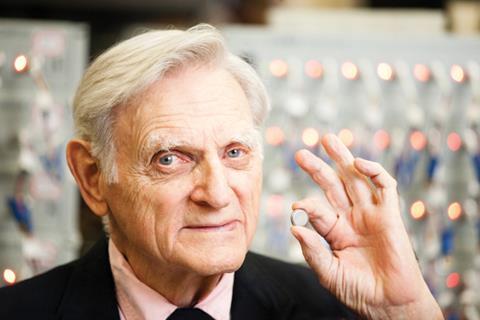
So while it is mightily impressive that Goodenough still holds a chair in engineering at the University of Texas, what singles him out is not his age. Instead it is the combination of a research record that benefits nearly everyone in the world every day, and his ongoing research on transition metal oxides, lithium ion batteries, oxygen permeation membranes and fuel cells.
His broad research interests make it difficult to pin a label on him. A chemist? A physicist? He is, in his own words, a ‘materials scientist trained as a solid state physicist who has worked with solid state chemists and ceramists to build a bridge between materials engineering, physics and chemistry’.
Magnetic findings
Goodenough made his first major contribution to science when he formulated a number of fundamental rules of magnetism while he was at the US government-funded MIT Lincoln Laboratory in the 1950s. He drew up what is now known as the Goodenough–Kanamori rule in 1955. This was subsequently tweaked by Junjiro Kanamori in 1959, hence the double barrel. This rule has helped rationalise the magnetic properties of a wide range of materials on a qualitative level.
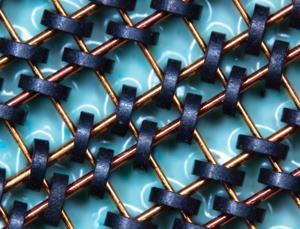
He was working with magnetism with the purpose of developing memory for a digital computer. The Lincoln Laboratory was set up after the second world war by the US Air Force to develop an air defence system. When he joined the lab in 1952, the system consisted of an integrated radar, communications and a digital computer that had only a 16 × 16 bit electrostatic storage tube. Goodenough worked alongside electrical engineers to develop the ferrimagnetic memory cores of the first random access memory (RAM) of the digital computer.
Once his team had completed their project with memory cores, and working memories were starting to become reality, Goodenough – hardly surprisingly – lost half his colleagues to industry. But he stayed on at the Lincoln Laboratory for another 20 years. For the first 12 of those he concentrated on fundamental research into solid state chemistry and wrote two landmark books: Magnetism and the chemical bond published in 1963, and Metallic oxides (Les oxydes des metaux de transition) published in 1973.
Energy crisis
Then in the early 1970s, the US government ruled that federally funded institutions like the Lincoln Laboratory should apply their research to specific engineering applications. Any support for fundamental research came to an end. This happened just as the first oil crisis was taking hold. Petrol was rationed in the US (and elsewhere) in 1972, and motorists were queueing at petrol pumps. Wisely, Goodenough turned his attentions to materials to enable energy conservation, more efficient energy conversion and electrical energy storage.
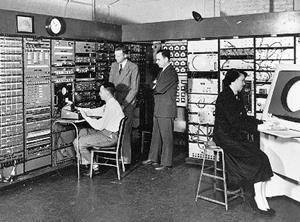
He was introduced to solid alkali ion electrolytes and to batteries, after being asked to sit on an evaluation panel for a project at the Ford Motor Company. Researchers at Ford were planning to develop an energy storage device for electric vehicles and had discovered fast sodium ion conduction in beta alumina, a hard polycrystalline ceramic. Conventional batteries consist of a liquid electrolyte and two solid electrodes, but in 1967 the Ford team had developed a NaS battery with molten sodium as the anode, a molten sulfur compound as the cathode and beta alumina ceramic as the electrolyte.
Goodenough began focusing on sodium ion conductivity and also on energy storage. Among other projects, he identified several framework structures that supported fast sodium ion conductivity. One of these was Na1+3xZr2(P1–xSixO4)3 which was subsequently named the Na superionic conductor Nasicon.
At about this time, the Lincoln Laboratory changed its emphasis again to fund only research directly related to the Air Force. This did not fit well with Goodenough’s plans, so he started making plans to leave.
Dreaming spires
In 1975, Goodenough was invited by the Royal Society of Chemistry to be their centenary lecturer, giving him the opportunity to visit several British universities. And in 1976, the University of Oxford invited him to lead their inorganic chemistry lab. Goodenough had little chemistry on his CV, so this was a brave decision by Oxford.
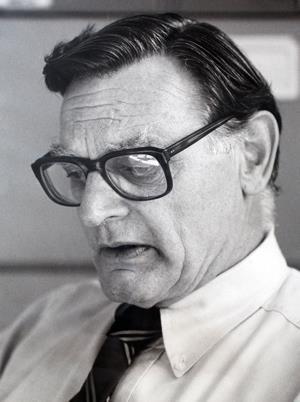
He did not have a degree in chemistry. His formal chemistry education rested on an introductory course in qualitative chemistry during his first year at Yale University in 1940, which he’d taken because a science course was compulsory alongside the liberal arts degree – classics and mathematics – he had chosen. His only other contact with chemistry was a course in organic chemistry in 1948 at the University of Chicago, where he was studying physics.
Goodenough graduated from his first degree just before the end of the war and was called up to become an Army Air Force meteorologist. His role was to provide the forecasts that were needed before tactical aircraft could be sent across the Atlantic Ocean during the war. The jet stream had not been discovered, there weren’t many weather stations, and weather data from England was often delayed. Nevertheless, Goodenough managed to calculate estimated times of arrival (ETAs) for flights that were key to the war effort. On one occasion he cleared a flight from an Air Force base in Stephenson, Newfoundland, for General Eisenhower (then Allies Supreme Commander in the lead up to D-Day), which landed him safely in Paris within six minutes of his ETA.
Although the Air Force was keen for Goodenough to remain as a meteorologist after the war, Goodenough returned to the US from a posting in the Azores to study physics at the University of Chicago. The US government supported returning veterans in a number of ways, including providing funds to attend university. It was after completing his PhD that he was offered a position at the Lincoln Laboratory.
While this wasn’t the obvious start for a professor of inorganic chemistry at the University of Oxford, a solid state chemist was required, and Goodenough had been working with solid state chemists at the Lincoln Laboratory.
Goodenough says he came into chemistry by the back door. While working with solid state chemists he had built a bridge between them and engineers, using their expertise to design experiments to explore fundamental physics questions in solid state science.
Recharging his batteries
Following on from his work on batteries at the Lincoln Laboratory, Goodenough kept up with progress in this area from his new home in Oxford. Just before Goodenough had left for Oxford, Stanley Whittingham, working for the energy company Exxon, published a paper in Nature describing a battery that used a lithium anode and a titanium disulfide cathode. The battery had high energy density and the diffusion of lithium ions into the titanium disulfide cathode was reversible, making the battery rechargeable. In addition, titanium disulfide has a particularly fast rate of lithium ion diffusion into the crystal lattice.
Exxon threw its resources behind the commercialisation of a Li/LiClO4/TiS2 battery. Unfortunately, after a few cycles, lithium dendrites grew across the strongly oxidising LiClO4 liquid electrolyte, shorting the cell and blowing up the laboratory. Safety concerns left Exxon to abandon the project, but Goodenough was intrigued.
In 1979, he showed that by using lithium cobalt oxide as the cathode of a lithium ion rechargeable battery, it was possible to achieve a high density of stored energy with an anode other than metallic lithium (which was to be avoided, given its tendency to form dendrites). This discovery led to the development of carbon-rich materials that allow for the use of stable and manageable negative electrodes in lithium ion batteries.
With colleagues at Oxford, Goodenough developed the layered and spinel oxides used in cathodes in the lithium ion batteries that have enabled the wireless revolution and catalytic concepts for the electrode reactions on oxides in room temperature as well as high temperature fuel cells. His technology was used in the first commercial lithium ion battery, launched by Sony in 1991.
Batteries incorporating this cathode material are now used worldwide for mobile phones and other portable wireless devices, power tools, hybrid automobiles, small all-electric vehicles, as well as increasingly for electrical energy storage for wind and solar power.
Returning home
10 years after joining Oxford, Goodenough was 64 years old and beginning to think about retirement. Or, at least, other chemists eyeing his position as chair of inorganic chemistry at Oxford were beginning to think about his retirement. Happily, this coincided with an invitation from the University of Texas to return to the US as Virginia H Cockrell Centennial Chair of Engineering. Goodenough decided it was time he went back to the US, and he has held that position ever since.
Just as he arrived in Texas, in 1986, the discovery of high temperature superconductivity in copper oxides was reported by now Nobel laureates Georg Bednorz and Alex Müller. The discovery reminded Goodenough of the unusual physical properties that are encountered at the crossover from localised to itinerant [metallic] electronic behaviour in transition metal oxides with perovskite related structures, which he had been studying at the Lincoln Laboratory in the 1970s before his funding was pulled.
News of the discovery was followed by a request from a physics professor at Jilin University in China for Goodenough to take on a PhD student who was interested in this 1970s research. The student, Jianshi Zhou, was duly invited over to work on copper oxide superconductors. Goodenough is extremely grateful for what turned out to be a very fruitful collaboration with this ‘brilliant experimental physicist’ who remains in his lab today, over 25 years later.
Zhou says he was honoured to work in Goodenough’s lab, having been inspired by his books as a student. But as Goodenough had only just arrived in Texas, and was still recruiting the team he needed to create his lab, Zhou was initially surprised by the sparse surroundings. ‘I was a bit disappointed when I came to his lab, which I thought would be full of sophisticated instruments,’ Zhou recalls. ‘As always, John encouraged me to do what I believed is important and to build the lab we have today,’ he says. ‘We have been enjoying understanding nature’s secrets. John is so energetic; his passion for science is a deep influence for many scientists like me. He is a great mentor and colleague.’
Sustainable energy
Any idea that Goodenough might start to take things a little easier now he is in his 90s, and spend the time pondering his past triumphs, is plainly nonsense. His university profile currently lists four research topics: transition metal oxides, lithium ion batteries, fuel cells and oxygen permeation membranes. These are all very active interests.
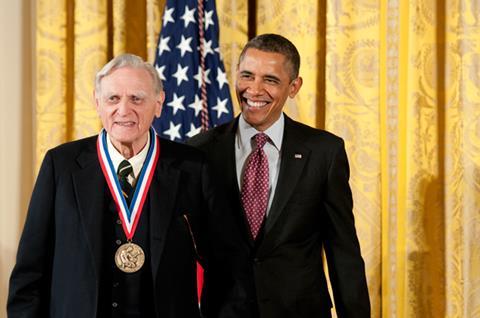
‘In the transition metal oxides, I am interested in fundamental questions about their electronic properties,’ says Goodenough, ‘including long-range and short-range magnetic and orbital ordering of localised electrons and the transition from localised to itinerant behaviour.’ The three further research topics share a longstanding goal of his: ‘[They all] involve electrochemical technologies to enable a transition to a sustainable energy economy that is freed from dependence on fossil fuels,’ he says. In these applied areas he is currently working on the design of electrochemical cells for powering electric cars and storing electricity generated by wind, solar and nuclear energies, on a reversible solid oxide fuel cell generating hydrogen from water and on carbon neutral power generation. No surprise then that Goodenough estimates that he currently publishes about 20 papers a year.
All this effort has not gone unrewarded. He has won, among many awards, the US National Medal of Science, the Stark Draper prize and the Enrico Fermi award. He is, of course, widely tipped for a Nobel prize, his name making regular appearances on lists of predictions. He also has prizes named in his honour, notably the RSC’s John?B?Goodenough award, which recognises exceptional and sustained contributions to the area of materials chemistry.
It is difficult to imagine how a list of achievements as stellar as his could leave Goodenough with much time for outside interests. But he has always been, and remains, deeply interested in understanding other cultures through travel. He also, since he is only 92, still enjoys mountain walking.
Bea Perks is a science writer based in Cambridge, UK
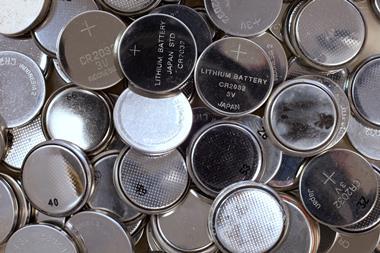

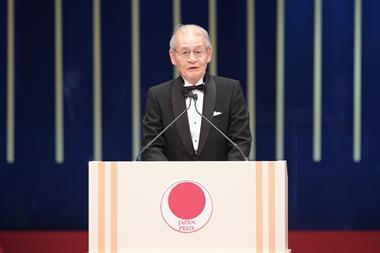









No comments yet